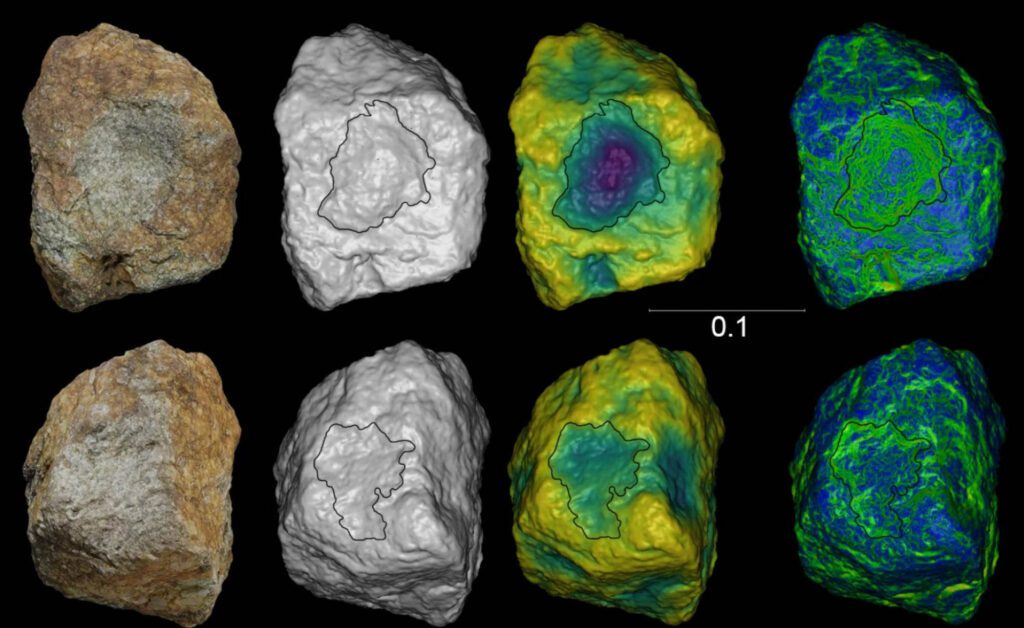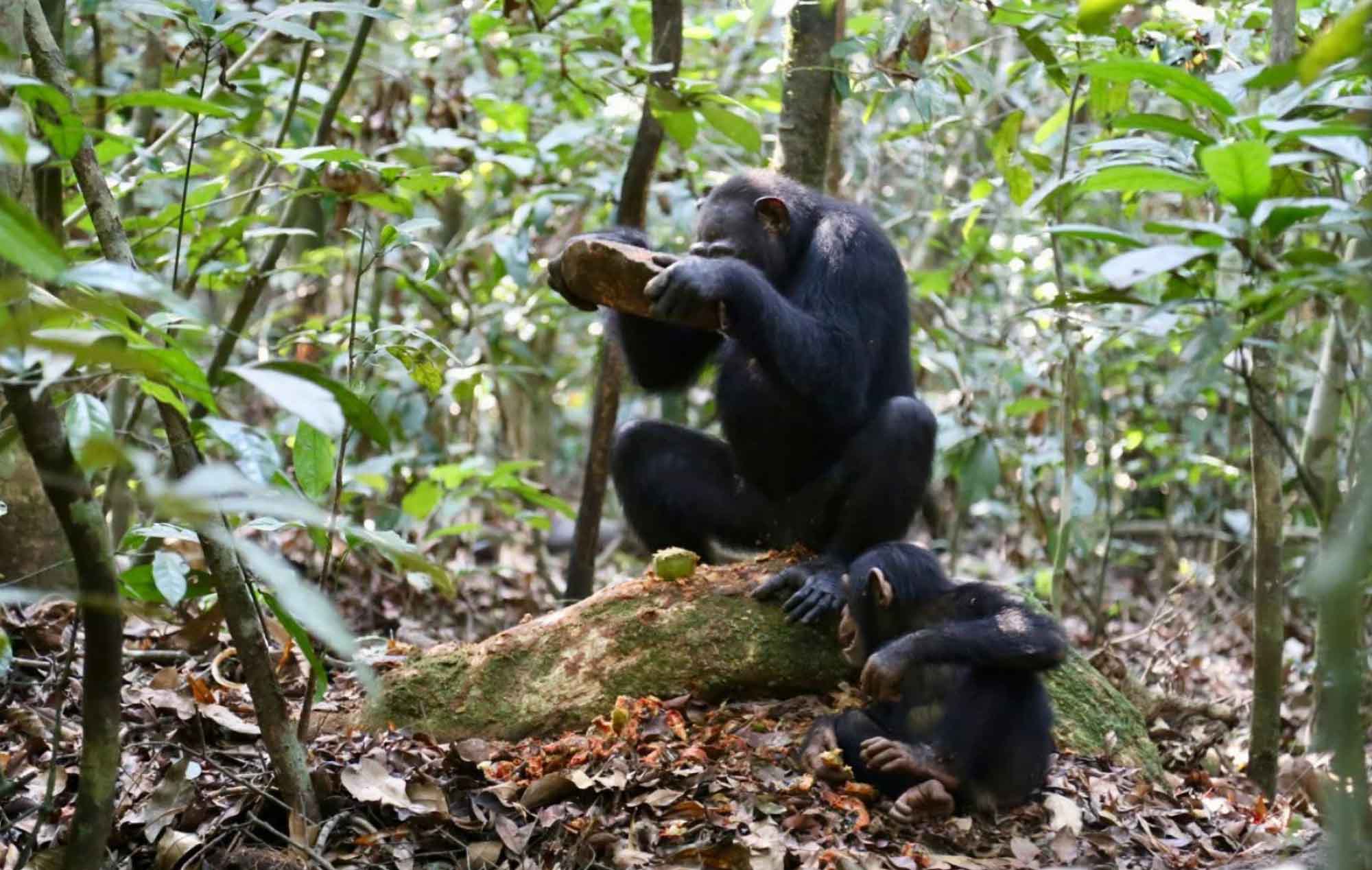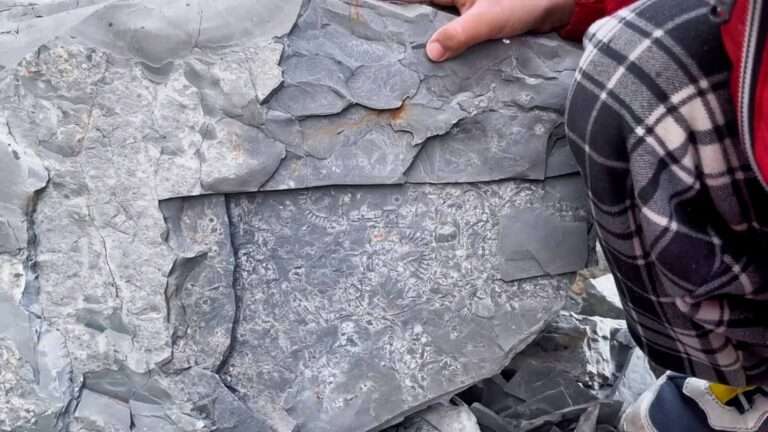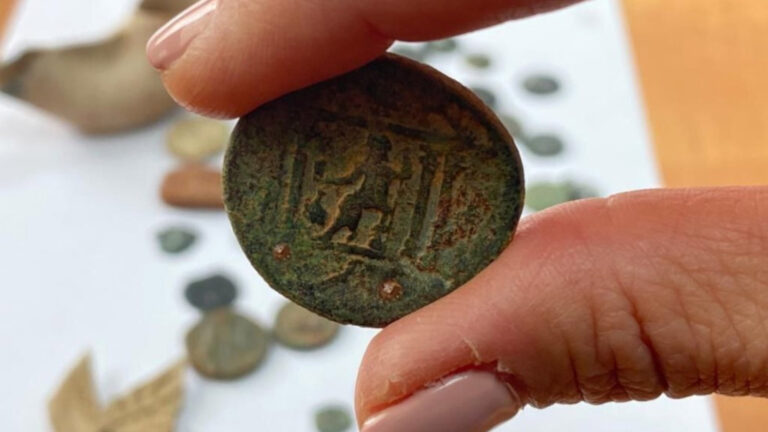A new study has revealed that chimpanzees use a variety of different stone tools depending on what kind of nut they want to crack.
The research was led by archaeologists and primatologists from the Technological Primates Research Group at the Max Planck Institute for Evolutionary Anthropology, in Leipzig, in Germany.
Newsflash obtained a statement and images from the Max Planck Institute for Evolutionary Anthropology, which said that “although several groups of chimpanzees practice nut cracking, the tools they use can differ significantly from one another, potentially leading to group specific material signatures.
“These differences are driven by a combination of stone choice, stone availability, and the nut species eaten.”
The experts made this discovery after conducting fieldwork the document the use of stone tools by a group of chimpanzees in the Tai National Park in Ivory Coast earlier this year.
The researchers identified a number of stones used by the chimps and did 3D scans of them, revealing that depending on what a chimp wants to crack, it will use a different type of stone, which the experts called “hammerstones”.
Chimps are well known to use rocks to bash open nuts after having placed them on hard surfaces that work like anvils, but it is the first time that scientists have managed to determine that different stone tools are used on different types of nut.
The scientists said: “It has long been shown that various chimpanzee groups possess different tool use cultures involving wooden and stone tools, however, only some groups in West Africa use stone tools to crack open nuts. By comparing, the 3D models of different stone tools used by chimpanzees in the Taï Forest to those from another group in Guinea, the researchers showed that there exist notable differences between the two groups in terms of their material culture.
“The study shows that this particular group of chimpanzees in Guinea uses stone hammers varying in the type of stone and sizes and very large stone anvils, sometimes greater than one meter in length. These durable stone tools are widespread across the landscape; preserve different levels of damage related to their use and represent a lasting record of chimpanzee behaviours.”

(Tomos Proffitt/Newsflash)
The expert also said: “This study highlights the fact that, although several groups of chimpanzees practice nut cracking, the tools they use can differ significantly from one another, potentially leading to group specific material signatures. These differences are driven by a combination of stone choice, stone availability, and the nut species eaten.
“Previous research has shown, that by using stone tools, some groups of chimpanzees develop their own archaeological record dating to at least 4,300 years ago.”
Tomos Proffitt from the Max Planck Institute of Evolutionary Anthropology, who led the research, said: “The ability to identify regional differences in stone tool material culture in primates opens up a range of possibilities for future primate archaeological studies.”
The statement said: “It has been hypothesised that a simple technology like nut cracking was a precursor to more complex stone technologies during the early stages of our own evolution more than three million years ago.”
And Proffitt added: “By understanding what this simple stone tool technology looks like, and how it varies between groups, we can start to understand how to better identify this signature in the earliest hominin archaeological record.”
The study was published in the academic journal Royal Society Open Science under the title ‘Identifying functional and regional differences in chimpanzee stone tool technology’ on Wednesday, 21st September. It was authored by Tomos Proffitt, Jonathan. S. Reeves, Soiret Serge Pacome and Lydia. V. Luncz.
To find out more about the author, editor or agency that supplied this story – please click below.
Story By: Joseph Golder, Sub-Editor: Michael Leidig, Agency: Newsflash
The Ananova page is created by and dedicated to professional, independent freelance journalists. It is a place for us to showcase our work. When our news is sold to our media partners, we will include the link here.




